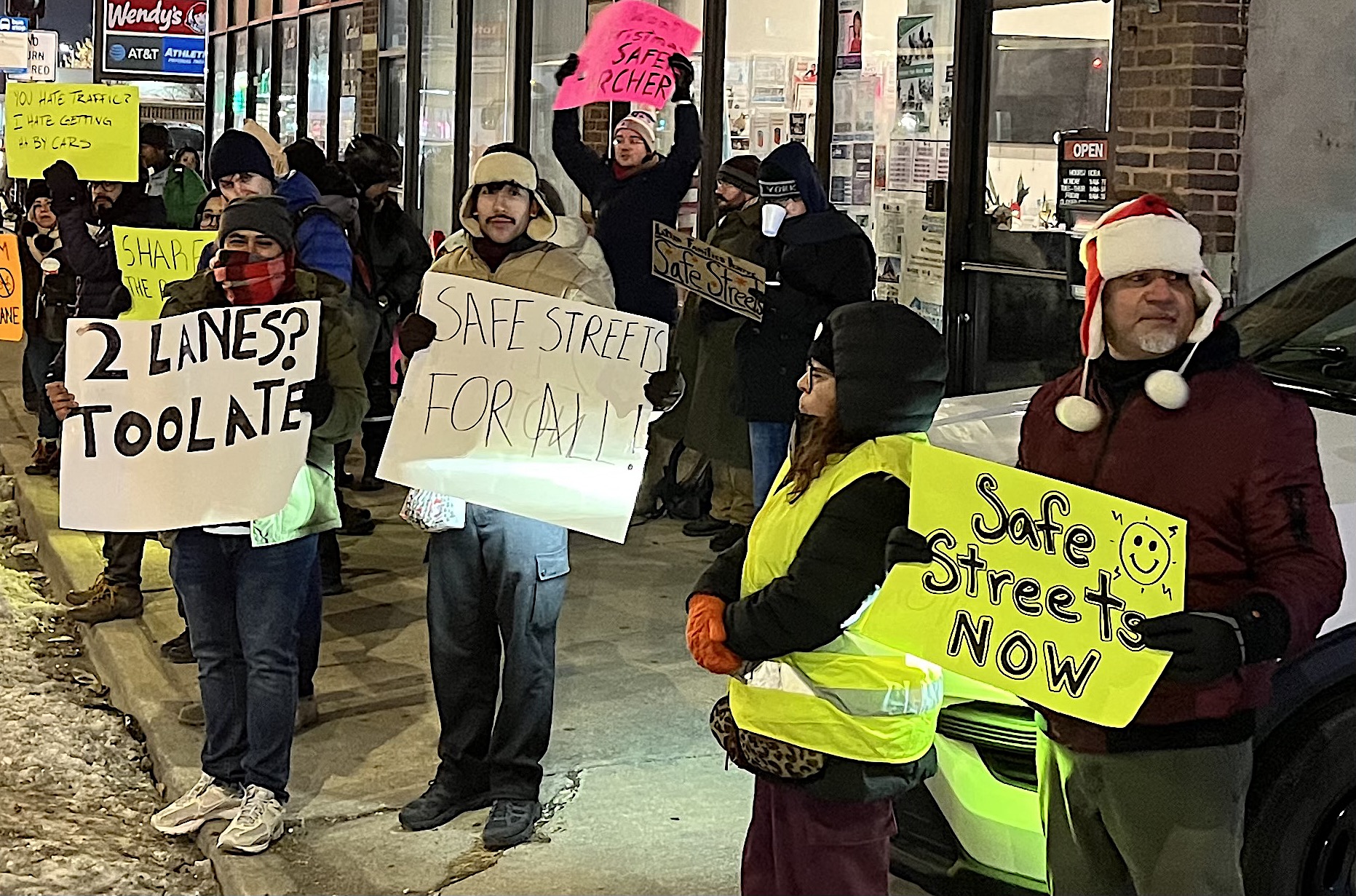
Good news for rail fans: Recently, Illinois legislators discussed a groundbreaking bill to launch statewide train service.
Senate Bill 1901 and House Bill 3285 and would beef up the Illinois Department of Transportation’s Bureau of Railroads, giving it the clout to plan, engineer, and coordinate elements of a statewide rail program. The Senate Appropriations-Public Safety and Infrastructure Committee mulled over the proposed law on April 23. The analogous House committee considered the bill on April 30.
The aim of this initiative is coordinate train and bus service all across the Prairie State. The backbone of the system would be high-speed rail between Chicago and St. Louis, and service would be aligned with local public transportation.
In addition to supersizing IDOT's railroad bureau, the legislation would help bankroll the maintenance and construction of existing and new track and bridges. It would also help pay for electrifying track, purchasing new trainsets, and supporting ongoing operations.
Representatives of the High Speed Rail Alliance advocacy group headed to Springfield, presumably by rail, on the 30th to lobby electeds and attend the meeting.
State-level rail programs like this could be essential for growing passenger rail ridership across the country. So if Illinois has success with this effort, it could encourage other states, especially our Midwestern peers, to follow suit.
Streetsblog Chicago recently caught up with the alliance's executive director Rick Harnish to learn more about what the proposed bill could accomplish, and the potential obstacles to getting it passed. The interview has been edited for clarity and brevity.

Cameron Bolton: Please give us a brief outline of what's being proposed here and why.
Rick Harnish: Railways, whether it's Metra or Amtrak or South Shore or somebody else that isn't running trains today, really help make it easier to travel, which makes it much more attractive for communities to attract people. Normally, I say it more concisely, but essentially, we believe that it's urgent that we make it possible for people to travel throughout the state without a car, and we've really got to step that up.
In order to do that, you need an agency capable of doing the design work, managing the projects, and putting together a long-term program, and you need money for bridges, tracks, and overhead electric wires, new trains themselves, fare stations, etc. And a key part of the problem has been that every 10 or 15 years, the state comes up with a little bit of money to do a project, and then it kind of dwindles out.
And so what we're saying is, let's put together an ongoing program where you can plan for expenditures every year. You've got staff at IDOT that are capable of doing your work, and we actually modernize Metra [Chicago's commuter rail system]. Metra is still operating coaches that were built in the '50s. They've done a very good job, but taking old freight locomotives and reworking them for passenger trains doesn't last forever. We need as a huge step in investment in order to have the kind of trains the city really needs. So, the purpose of the bill is to provide some definitions of what that program should be.
CB: Recently, the Trump administration has been attacking California's high-speed rail project, and recently canceled funding for a high-speed rail project in Texas, calling it a waste of taxpayer money. Yeah. So, would this Illinois legislation help address the federal government's hostility towards pasture rail service, particularly high-speed rail?
RH: Some people like attacking California HSR because it is the only active high-speed project right now and they don’t won’t high-speed rail to succeed. Others are frustrated that the project hasn't gone as well. California High Speed Rail didn't have the proper engineering and project management staff in place and so they weren't ready to take advantage of the money that was made available to them.
The lesson for Illinois is to get the projects ready to go. Whether it's high-speed rail or whether it's regional rail, we need to get ready for these projects. And, it is super important that Illinois take control of our destiny, whatever the federal climate. It starts with a commitment at the state level to do engineering and planning work.

CB: Okay, cool. In addition almost all the state legislators supporting the Illinois bills are Democrats, despite the fact that passenger rail is vital for many smaller Illinois cities, towns, and rural areas that predominantly vote Republican. Why aren't more state GOP members voicing support for this? And do you think there's any way to get them on board with it?
RH: I don't have a specific way, but yes, absolutely, there's a way to get them on board. In terms of why they aren't on board yet. I don't have a good answer.
CB: Okay, would you care to hazard a guess, or would you just not even like to speculate?
RH: Yeah, I don't want to speculate. But I do want to emphasize that the folks who need this the most are downstate. And it's not just the trains, it's the bus component as well. So it's very difficult to get to the hospital from a lot of communities and having a better bus network will take care of that. It's hard to get to Chicago or to Springfield or somewhere else when you need to get there, it's really, really difficult, and so having a comprehensive network that works together, so maybe sometimes it's just a bus ride, maybe sometimes it's just a train ride, or maybe sometimes it's a combination of the two, but we need to make it possible to travel throughout the state without a car, and that's what this is about. The trains are the backbone of the public transit.
CB: IDOT recently got a new Secretary, former Chicago Department of Transportation Commissioner Gia Biagi, who has a pretty good track record for progressive transportation policy. Do you think having her as the new State transportation chief will be beneficial for creating more forward-thinking Illinois rail policies?
RH: I have a lot of respect for Gia and her views. I'm excited that she was appointed.
CB: What are the next steps for getting this legislation passed, and do you have any suggestions on how rail supporters can help get this done?
RH: So the most important thing is to contact their legislators and keep it simple. Tell them, "I want to be able to take the train here for these reasons. Please help get the process moving.”
CB: So, how soon do you think we might be able to get this bill passed?
RH: The first thing that needs to happen is to fund transit operating. And, during the transit discussion that's happening right now, the State needs to stop thinking about the six counties of the state as completely separate from the rest of the state. So, we need to get the legislature moving toward transit as a statewide issue. It's not a northeast Illinois issue. It is unfortunate that the legislature is dealing with governance and operating funding separately from capital spending. Capital probably takes a couple of years of discussion, and when there's a capital bill, then that's when we need to focus on expansion.
For more details about this effort, contact the High Speed Rail Alliance at info@hsrail.org or (773) 334-6758.

Did you appreciate this post? Streetsblog Chicago is currently fundraising to help cover our 2025-26 budget. If you appreciate our reporting and advocacy on local sustainable transportation issues, please consider making a tax-deductible donation here. Thank you!





